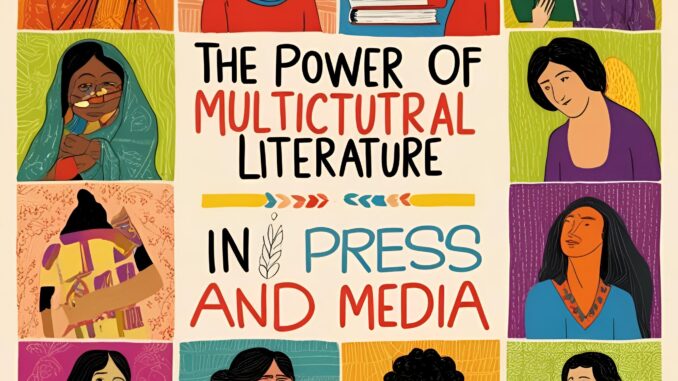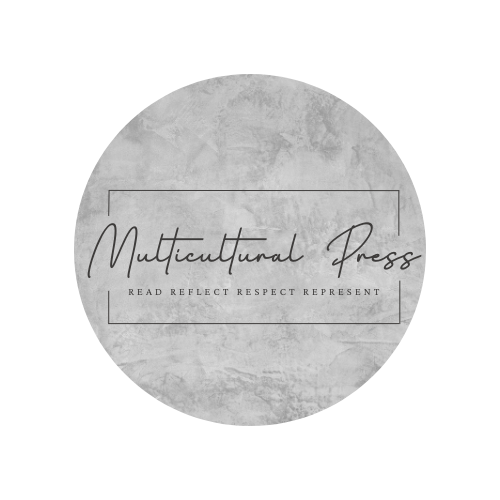
(Written by David Buddhason)
The Power of Multicultural Literature in Press and Media
In an increasingly interconnected world, the importance of multicultural perspectives in media cannot be overstated. The rise of multiculturalism in the press has mirrored the diversity seen in communities globally, allowing for more inclusive representation and fostering a deeper understanding of the complex web of cultural experiences. As societies become more diverse, the role of multicultural literature in shaping public narratives has become pivotal. By integrating these voices into the mainstream press, we create a richer, more reflective view of our shared human experience, one that recognizes the value of cultural diversity and promotes empathy across borders.
The Value of Multicultural Literature in the Press
Multicultural literature plays a transformative role in the press, both in fiction and non-fiction, offering readers a chance to explore worlds and lives beyond their own. This literary approach enables readers to engage with stories and perspectives that might otherwise remain outside their understanding. Through these narratives, readers learn about other cultures, traditions, and histories, fostering a sense of global awareness. For journalists and media professionals, embracing multicultural literature as part of their storytelling arsenal means moving beyond stereotypes and providing a platform for voices that reflect the reality of a multicultural society.
One significant aspect of multicultural literature in the press is its ability to challenge ethnocentric viewpoints. In a world where media often reinforces a narrow understanding of cultures, literary diversity serves as a corrective, offering a space for underrepresented communities to express their stories. According to various studies (e.g., Norton, 2009), exposure to global narratives through literature helps readers recognize the interconnectedness of global events and appreciate the diversity of lived experiences.
Cultivating Empathy and Connection
Media outlets that feature multicultural stories contribute to the creation of more empathetic societies. When individuals are exposed to stories of people from different backgrounds, they are more likely to view the world from another’s perspective. This is especially important in a media landscape where global crises, such as refugee movements, racial tensions, and intercultural conflicts, are frequently highlighted. Multicultural literature within the press can make these topics more relatable and less abstract, encouraging readers to understand the human experiences behind the headlines.
The work of authors like Jeannie Baker, whose book Mirror explores the similarities between children from vastly different cultures, exemplifies how such literature can transcend borders. Through the pages of a simple picture book, readers are invited to see not just the differences, but also the shared experiences that unite us all—whether it be a shared school day or similar aspirations. The press, by adopting such narratives, can move beyond the sensationalism often associated with reporting on difference, instead creating more nuanced, compassionate dialogues.
Cross-Cultural Dialogue and Collaboration
Multicultural press not only educates but also promotes cross-cultural dialogues. Journalism that embraces diverse narratives helps foster an environment where cultural exchange is encouraged, and the notion of “us” versus “them” is dismantled. Through multicultural storytelling, media outlets can highlight stories of cross-cultural friendship and collaboration, reinforcing the idea that diversity is an asset rather than a division.
For example, stories like that of My Two Blankets by Irena Kobald illustrate the potential for human connection even amidst the most challenging circumstances, such as migration and displacement. In a media context, this book’s themes of friendship and the discovery of shared values across cultures can resonate deeply with readers who may not otherwise engage with refugee or migrant narratives. By featuring such stories, the press has the opportunity to turn what might seem like a distant or abstract issue into one of personal resonance, prompting empathy and understanding.
Shaping Critical Worldviews
Another significant role that multicultural literature plays in the press is its capacity to provoke critical thinking. By presenting diverse perspectives, the media encourages readers to evaluate issues from multiple angles, particularly when it comes to complex global issues such as migration, war, and human rights. This form of literature challenges readers to reconsider their assumptions and understand the broader, often more complex, contexts surrounding these topics.
Texts that focus on global issues, like Ziba Came on a Boat by Elizabeth Lofthouse, provide not only an emotional connection to the refugee experience but also offer a critical examination of societal and political structures. Journalists who incorporate such literature into their reporting help readers question the status quo and examine the impact of policies and attitudes on marginalized communities. Such work compels readers to confront uncomfortable truths about inequality, injustice, and exclusion, ultimately fostering a more informed and socially responsible citizenry.
Enhancing Personal Identity and Cultural Understanding
For individuals who belong to minority or immigrant communities, multicultural literature in the press can serve as an affirming force. When people see their cultures and experiences represented in media, it validates their identity and fosters a sense of belonging. This is particularly vital in multicultural societies, where individuals may otherwise feel overlooked or misunderstood.
Incorporating multicultural narratives into the press also aids in the process of identity formation for young readers, helping them understand where they come from while encouraging pride in their cultural heritage. Studies have shown that when students or readers encounter stories they can relate to, their engagement with literature—and by extension, their understanding of the world—improves (Hseu & Hetzel, 2000). For a press that seeks to represent all aspects of society, this approach becomes not just a matter of inclusivity, but one of social responsibility.
To discuss further: The Role of the Press in Promoting Multiculturalism
The press has a critical role in amplifying multicultural voices and perspectives, not just as a form of entertainment, but as a tool for social change. Media outlets must ensure that they are not simply reflecting society as it is, but also contributing to its evolution towards a more inclusive, compassionate, and globally aware community. By incorporating multicultural literature into their coverage, whether through book reviews, feature stories, or integrating these narratives into broader discussions, the press can help shape a more empathetic and connected world.
As societies continue to diversify, the inclusion of multicultural perspectives in the media is not a luxury but a necessity. Through the power of literature, the press has the opportunity to foster greater understanding, bridge cultural divides, and unite individuals across different backgrounds in a shared humanity.
